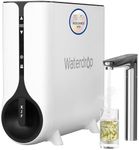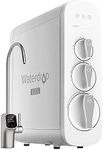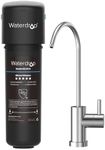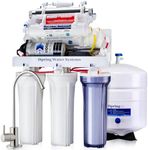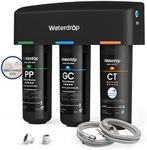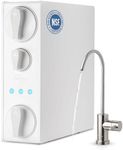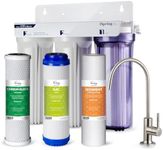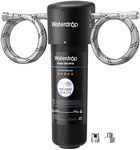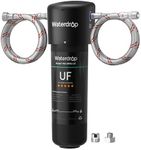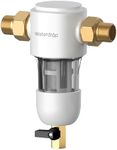Buying Guide for the Best Under Sink Water Filters
Choosing the right under-sink water filter is crucial for ensuring that you and your family have access to clean and safe drinking water. These filters are installed under your kitchen sink and are designed to remove contaminants from your water supply, improving both the taste and safety of your water. When selecting an under-sink water filter, it's important to consider the specific needs of your household, such as the types of contaminants present in your water, the flow rate you require, and the ease of installation and maintenance. Understanding the key specifications will help you make an informed decision that best suits your needs.Filtration TechnologyFiltration technology refers to the method used by the filter to remove contaminants from the water. Common technologies include activated carbon, reverse osmosis, and ceramic filters. Activated carbon is effective at removing chlorine, sediment, and volatile organic compounds (VOCs), making it suitable for improving taste and odor. Reverse osmosis is more comprehensive, removing a wider range of contaminants including heavy metals and nitrates, but it may also remove beneficial minerals. Ceramic filters are good for removing bacteria and cysts. Choose a technology based on the specific contaminants you need to address in your water supply.
Flow RateFlow rate is the amount of water that can pass through the filter in a given time, usually measured in gallons per minute (GPM). A higher flow rate means more water can be filtered quickly, which is important for households with high water usage. Typical flow rates for under-sink filters range from 0.5 to 2 GPM. If you have a large family or frequently use water for cooking and cleaning, opt for a higher flow rate to ensure you have enough filtered water on demand. For smaller households, a lower flow rate may be sufficient.
Filter LifespanFilter lifespan indicates how long a filter can effectively remove contaminants before it needs to be replaced. This is usually measured in gallons or months. A longer lifespan means less frequent replacements, which can be more convenient and cost-effective. Lifespans can range from a few months to a year or more, depending on the filter type and water quality. Consider your water usage and the quality of your water supply when choosing a filter with an appropriate lifespan. If your water has high levels of contaminants, you may need to replace filters more frequently.
Installation and MaintenanceInstallation and maintenance refer to how easy it is to set up and maintain the filter system. Some filters are designed for DIY installation, while others may require professional help. Maintenance involves replacing filters and occasionally cleaning the system. Look for systems with clear instructions and accessible components if you prefer to handle installation and maintenance yourself. If you are not comfortable with DIY tasks, consider a system that offers professional installation services. Regular maintenance is crucial to ensure the filter continues to perform effectively.
Contaminant RemovalContaminant removal specifies the types and levels of contaminants that the filter can remove from your water. This can include chlorine, lead, bacteria, pesticides, and more. It's important to know what contaminants are present in your water supply, which can be determined through a water quality test. Once you know what needs to be removed, choose a filter that is certified to remove those specific contaminants. Certification from organizations like NSF International can provide assurance that the filter meets certain standards for contaminant removal.
